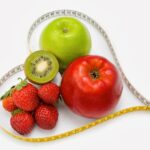News & Events
How to eat well
What eating well means
Eating well means adopting a varied and balanced diet, in other words; eating everything in controlled quantities. This is done by preferring food that is good for your health (fruits, vegetables, starchy food, fish…) over sweets (candy, sweet beverages…), salty food (cakes, appetizers, chips…) and fatty food (cold cuts, butter, cream…).
This dietary balance cannot be constructed over a single meal or day, rather over several days to a full week. This is why there is no such thing as forbidden food or miracle food, and so, a celebratory meal can be counterbalanced by light meals afterwards.
Along with regular physical activity, a controlled diet limits gain weight and also reduces the risk of certain health problems such as cancer, type 2 diabetes, high cholesterol, cardiovascular diseases, osteoporosis…
The 9 points of reference
The French national health and nutrition program offers 8 key points of reference to maintain a healthy diet and an addition one, related to physical activity.
1. Fruits and vegetables: At least 5 a day
2. Dairy products: 3 a day (4 or 4 for children and teenagers)
3. Starchy products: at every meal
4. Meat, fish, eggs: 1 to 2 times a day
5. Fats: to be limited
6. Sweets: to be limited
7. Salt: to be limited
8. Water: at will between and throughout the meals
9. Physical activity: at least 30 minutes of brisk walking a day for adults (at least 1 hour for children and teens)
The good rhythm of meals
Meals rhythm our day and give our bodies points of reference that would help us regulate our food intake. Skipping meals forces our body to stock food in preparation for the next “starvation” period you might put it through!
The time we take to eat is also important. Our brain requires time to receive signals from the stomach, while we are eating and it takes approximately 20 minutes to feel like we’ve eaten enough.
Breakfast
After sleeping for a whole night, your body would have fasted for at least 8 hours. A complete and adapted breakfast for the whole family should include: 1 cereal product + 1 dairy product + 1 fruit + 1 drink.
o Which cereal product? Bread (whole grain, ideally) or cereals, go for who are least sweetened. Keep croissants and other pastries for special occasions as they contain a lot of fat and sugar.
o Which dairy product? A bowl or a glass of milk, some yoghurt or white cheese, and why not go for a slice of cheese.
o Which fruit? A kiwi, a peach, a banana, an apricot, an orange, an apple… depending on the season, some fruit juice, a juice made 100% out of fruit, fruit compote without added sugar.
o Which drink? Coffee, tea, or water.
Lunch and dinner
Lunch and dinner may have the same structure:
o 1 portion of vegetables (80 to 100 g): in a salad or cooked with the main dish…
o Meat, fish or eggs (around 100 g)
o Starchy food: wholegrain bread, rice, oven-baked potatoes, pasta…
o 1 portion of dairy products: cheese (30 g), yoghurt, white cheese
o 1 fruit as dessert: cut into quarters, as compote…
o Water at will: It is the most encouraged drink to have during meals!
Snack and dessert
A snack and dessert are not necessary to eat but play an important role in helping us wait until the meal time arrives. They may involve one or two ingredients, such as:
o 1 dairy product: yoghurt, cheese, white cheese, milk…
o 1 cereal product: cereal cookies, bread…
o 1 fruit: fresh or compote
It is ideal to have a snack two hours before lunch.

